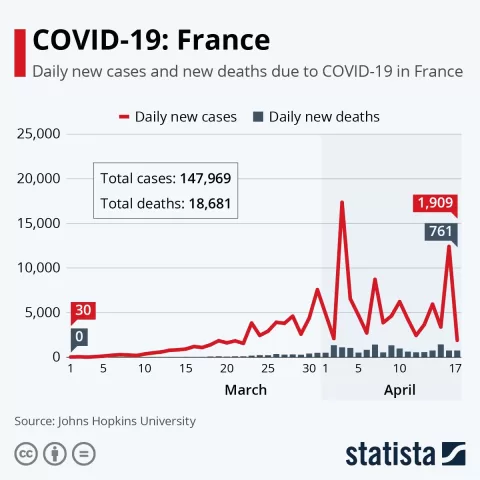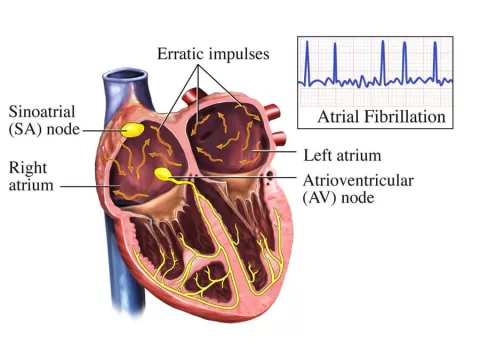Body Dysmorphic Disorder (BDD) is a serious mental health condition that can profoundly impact an individual’s life. Those affected by BDD often experience intense preoccupation with perceived flaws in their appearance, which can lead to debilitating anxiety and depression. Common BDD symptoms include excessive grooming, social withdrawal, and compulsive behaviors that disrupt daily activities. Understanding the treatment for BDD is crucial, as options like cognitive behavioral therapy (CBT) have proven effective in helping individuals regain control over their thoughts and feelings. Raising mental health awareness about BDD, including its relationship with muscle dysmorphia, is essential in fostering empathy and support for those struggling with this disorder.
Body Dysmorphic Disorder, often referred to as appearance anxiety or obsessive appearance concern, is a condition where individuals become fixated on perceived imperfections in their looks. This mental health issue can lead to significant distress, with sufferers frequently engaging in compulsive behaviors to cope with their distorted self-image. Many related terms, such as muscle dysmorphia—an obsession with muscularity and body shape—highlight the various facets of this disorder. Effective treatment options, including cognitive behavioral therapy and medication, are crucial for addressing the debilitating symptoms associated with these conditions. Increasing awareness and understanding of these issues can help break the stigma surrounding mental health and encourage individuals to seek help.
Understanding the Symptoms of Body Dysmorphic Disorder
Body Dysmorphic Disorder (BDD) manifests through various symptoms that can severely impact an individual’s daily life. One of the most prominent symptoms is the preoccupation with perceived flaws in one’s physical appearance. This obsession can lead to significant anxiety, depression, and social withdrawal, as individuals may avoid situations where they fear being judged. The compulsive behaviors associated with BDD, such as excessive grooming or frequent mirror-checking, are attempts to alleviate the distress caused by these perceived imperfections.
Moreover, individuals with BDD often seek reassurance from friends or family about their appearance, but this reassurance provides only temporary relief. Even after receiving validation, they may still feel dissatisfied and continue to obsess over their perceived defects. Understanding these symptoms is crucial not only for those affected but also for loved ones, as it can foster empathy and encourage seeking professional help.
The Impact of Muscle Dysmorphia on Mental Health
Muscle dysmorphia, a subtype of Body Dysmorphic Disorder, primarily affects individuals who are obsessed with their muscularity and body shape. This condition is prevalent among bodybuilders and fitness enthusiasts who may resort to extreme measures, such as excessive exercise and the use of supplements, to achieve their ideal physique. The pressure to conform to societal standards of physical appearance can exacerbate feelings of inadequacy and lead to severe mental health issues, including depression and anxiety.
Recent studies have highlighted the concerning trend of muscle dysmorphia among teenagers, indicating that the obsession with achieving a perfect body can lead to unhealthy behaviors and distorted self-image. Recognizing the signs of muscle dysmorphia is essential for early intervention and treatment. Mental health awareness campaigns are crucial in addressing these issues, as they can help educate individuals about the risks associated with extreme body ideals and the importance of seeking help.
Effective Treatment Options for Body Dysmorphic Disorder
Treatment for Body Dysmorphic Disorder typically involves a combination of therapeutic approaches tailored to the individual’s needs. Cognitive Behavioral Therapy (CBT) has emerged as one of the most effective treatment modalities. CBT focuses on helping individuals identify and alter negative thought patterns related to their appearance, which can significantly improve their mental health and overall quality of life. This therapy encourages patients to confront their fears and develop healthier coping strategies.
In addition to CBT, medication such as Selective Serotonin Reuptake Inhibitors (SSRIs) may be prescribed to alleviate symptoms of anxiety and depression commonly associated with BDD. Support groups also play a vital role in the treatment process, providing individuals with a supportive community where they can share experiences and gain insights from others facing similar challenges. Together, these treatment options can lead to meaningful recovery and an improved sense of self.
Raising Mental Health Awareness About BDD
Mental health awareness regarding Body Dysmorphic Disorder is crucial in combating stigma and promoting understanding of this often-misunderstood condition. Increased awareness can lead to early diagnosis and intervention, which is essential for effective treatment. Educational campaigns and media discussions help to shed light on the realities of living with BDD, making it easier for individuals to recognize their symptoms and seek help.
Furthermore, raising awareness about the relationship between BDD and other mental health issues, such as anxiety and depression, can foster a more comprehensive understanding of the disorder. By sharing personal stories and scientific research, we can encourage open conversations about mental health, helping those affected by BDD feel less isolated and more empowered to seek support.
The Role of Support in Overcoming Body Dysmorphic Disorder
Support from friends, family, and mental health professionals plays a critical role in the recovery journey for individuals with Body Dysmorphic Disorder. Having a strong support system can help individuals feel understood and less alone in their struggles. Encouragement from loved ones to seek therapy or join support groups can provide the motivation needed to confront their challenges and work towards recovery.
Moreover, support groups offer a safe space for individuals to share their experiences and coping strategies. These communities can provide valuable insights and foster a sense of belonging, which can be particularly beneficial for those feeling isolated due to their condition. By connecting with others who understand their struggles, individuals with BDD can find hope and inspiration, reinforcing their commitment to recovery.
Frequently Asked Questions
What are the common symptoms of Body Dysmorphic Disorder (BDD)?
Common symptoms of Body Dysmorphic Disorder (BDD) include an obsessive preoccupation with perceived flaws in appearance, engaging in compulsive behaviors such as excessive grooming or mirror checking, social withdrawal due to fear of judgment, and seeking constant reassurance about appearance. These symptoms can significantly impair daily functioning and emotional well-being.
How effective is Cognitive Behavioral Therapy (CBT) in treating Body Dysmorphic Disorder?
Cognitive Behavioral Therapy (CBT) is highly effective in treating Body Dysmorphic Disorder (BDD). It helps individuals identify and challenge negative thought patterns related to their appearance, leading to improved self-esteem and reduced compulsive behaviors. Many mental health professionals recommend CBT as a first-line treatment for BDD.
What treatment options are available for managing Body Dysmorphic Disorder (BDD)?
Treatment for Body Dysmorphic Disorder (BDD) typically includes Cognitive Behavioral Therapy (CBT) and medications such as Selective Serotonin Reuptake Inhibitors (SSRIs). Support groups can also be beneficial, providing a community of understanding and shared experiences among those affected by BDD.
What is muscle dysmorphia, and how is it related to Body Dysmorphic Disorder?
Muscle dysmorphia is a subtype of Body Dysmorphic Disorder (BDD) characterized by an obsession with achieving an idealized muscular physique. Individuals with muscle dysmorphia may view themselves as inadequately muscular and often engage in excessive exercise or use of supplements, highlighting the distorted self-image central to both conditions.
How can mental health awareness help those with Body Dysmorphic Disorder?
Mental health awareness plays a crucial role in helping individuals with Body Dysmorphic Disorder (BDD) by reducing stigma, promoting understanding, and encouraging those affected to seek help. Increased awareness can lead to better access to resources, effective treatments, and supportive communities that foster healing and improve quality of life.
| Key Points | Details |
|---|---|
| What is BDD? | A mental health condition characterized by obsessive focus on perceived appearance flaws. |
| Symptoms | 1. Preoccupation with appearance 2. Compulsive behaviors (grooming, mirror checking) 3. Social withdrawal 4. Seeking reassurance |
| Causes | Linked to genetics, environmental factors, trauma, or bullying. |
| Recent Findings | 1. Facial Dysmorphia and treatment options (CBT). 2. Muscle Dysmorphia trends among teens. 3. Impact of BDD on relationships. 4. Awareness of ‘bigorexia’ in youth. 5. Psychological comorbidities related to chronic conditions. |
| Treatment Options | 1. Cognitive Behavioral Therapy (CBT) 2. Medications (SSRIs) 3. Support groups |
Summary
Body Dysmorphic Disorder (BDD) is a serious mental health condition that necessitates awareness and understanding among individuals and their support networks. Those affected experience a debilitating preoccupation with perceived flaws in their appearance, which can lead to significant emotional distress and social impairment. Recognizing the symptoms of BDD, such as compulsive behaviors and social withdrawal, is crucial for early intervention and support. Treatment modalities, including Cognitive Behavioral Therapy (CBT) and medications like SSRIs, have proven effective in improving the quality of life for individuals suffering from BDD. With the rise of awareness through recent studies and articles, it is imperative to continue fostering discussions around Body Dysmorphic Disorder to promote understanding and encourage those affected to seek help.
The content provided on this blog (e.g., symptom descriptions, health tips, or general advice) is for informational purposes only and is not a substitute for professional medical advice, diagnosis, or treatment. Always seek the guidance of your physician or other qualified healthcare provider with any questions you may have regarding a medical condition. Never disregard professional medical advice or delay seeking it because of something you have read on this website. If you believe you may have a medical emergency, call your doctor or emergency services immediately. Reliance on any information provided by this blog is solely at your own risk.








